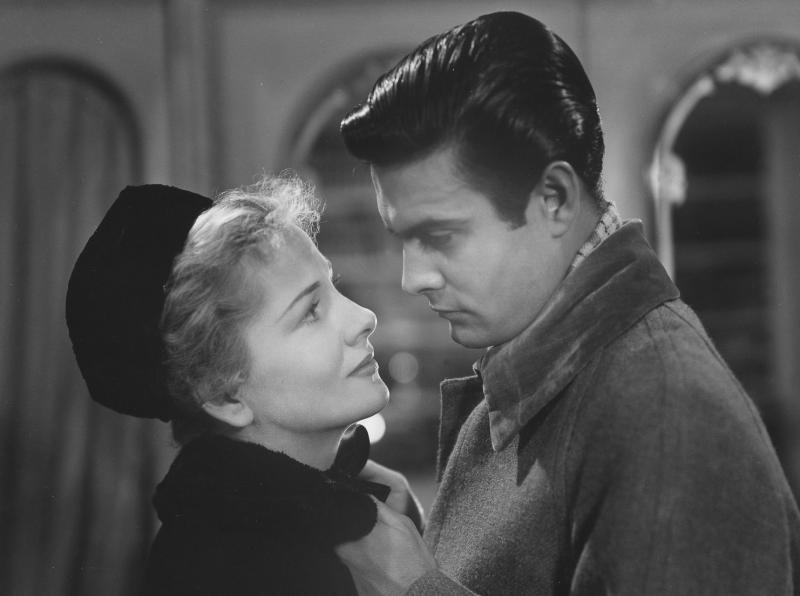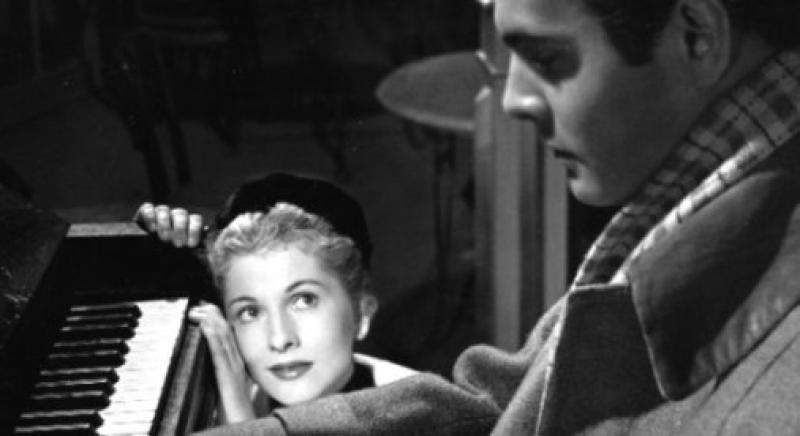Letter from an Unknown Woman | reviews, news & interviews
Letter from an Unknown Woman
Letter from an Unknown Woman
Ophüls' classic tearjerker is back on the big screen. Bring tissues.

They always used to say that the worst books make the best films, and that the best books don’t prosper so much on screen. But then there are always complicated exceptions. In another life perhaps Stefan Zweig would have made a matchless screenwriter. His facility for perfectly crafted tales of doomed love brought him global fame just when the silent movies were processing such fare as romantic potboilers.
Shot in 1948, six years after Zweig and his young second wife took their lives in Brazilian exile, the film was adapted from a story published in 1922. It’s a typically Zweigian scenario. An eminent pianist and successful lothario – also known as Stefan - plans a midnight flit rather than accept the challenge of yet another duel at dawn. As he prepares his exit, he idly opens an envelope that has just been delivered. “By the time you read this letter,” go its first words, "I may be dead.” Which is nothing if not a hook. They are written by a woman who claims to have loved him from afar since she was a girl.
The evanescent world of Hapsburg Vienna is gorgeously evoked by Ophüls
Max Ophüls duly spirits us back into the world of Lisa’s remembering, when from his apartment the sound of Stefan's piano wafts seductively across the courtyard of the building to where she lives with her widowed mother. Though a sunny young thing, Lisa's is a world of secret shadows. One day she steals into his apartment to wander through his private space, only to be discovered by his mute manservant. In the years that follow she turns down a decent proposal of marriage in order to keep herself free for a man she has never met, seeks him out the minute she is able, and, in her letter, claims even to have had a romantic tryst with him, only for each of them to disappear from each other’s lives in fateful circumstances.
The evanescent world of Hapsburg Vienna is gorgeously evoked by Ophüls, with its smoky cafés and glittering opera houses, the unabashed whiff of the illicit mingling with the spit and polish of opulent wealth and rigid decorum. This was Ophüls’s second picture in America. Having moved from his native Germany to Paris in 1933, and on to Hollywood in 1941, he didn’t shoot his first film in English till 1947. Nostalgia for old-world Europe is the rich subtext of this tearjerking romance, for a lush yesteryear that refuses to be resuscitated.
 As Lisa, she may not be anyone’s idea of a Viennese Fraülein, but Joan Fontaine gives herself to the spirit of the story with a winning ardour – the film was in fact an idea coaxed to fruition by her and her producer husband William Dozier. She beautifully embodies Lisa’s purblind innocence, all peachiness and dreamy smiles, in such a way that you don’t scream at the screen, “What on earth do you see in the blaggard?” - as you easily might.
As Lisa, she may not be anyone’s idea of a Viennese Fraülein, but Joan Fontaine gives herself to the spirit of the story with a winning ardour – the film was in fact an idea coaxed to fruition by her and her producer husband William Dozier. She beautifully embodies Lisa’s purblind innocence, all peachiness and dreamy smiles, in such a way that you don’t scream at the screen, “What on earth do you see in the blaggard?” - as you easily might.
Embodying Stefan Brand, the silver-fingered concert pianist, the all too handsome Louis Jourdan shows us exactly what she sees: a man whose immaculate gift for charm is a dangerous compulsion. Nowadays we’d probably label him a sex addict and stick him in therapy. Back then the only treatment for his pathology was pistols at dawn, the fate that bears down on him as we learn quite how false an idol he has been to Fontaine’s gullible fantasist. Perhaps Lisa is the foolish architect of her own misery. But Zweig and Ophüls, a pair of European romantics, persuade us not to judge anyone too harshly who has been bitten by love. And perhaps Zweig's correspondent would agree.
Share this article
The future of Arts Journalism
You can stop theartsdesk.com closing!
We urgently need financing to survive. Our fundraising drive has thus far raised £49,000 but we need to reach £100,000 or we will be forced to close. Please contribute here: https://gofund.me/c3f6033d
And if you can forward this information to anyone who might assist, we’d be grateful.

Subscribe to theartsdesk.com
Thank you for continuing to read our work on theartsdesk.com. For unlimited access to every article in its entirety, including our archive of more than 15,000 pieces, we're asking for £5 per month or £40 per year. We feel it's a very good deal, and hope you do too.
To take a subscription now simply click here.
And if you're looking for that extra gift for a friend or family member, why not treat them to a theartsdesk.com gift subscription?
more Film
 Blu-ray: The Graduate
Post #MeToo, can Mike Nichols' second feature still lay claim to Classic Film status?
Blu-ray: The Graduate
Post #MeToo, can Mike Nichols' second feature still lay claim to Classic Film status?
 Little Trouble Girls review - masterful debut breathes new life into a girl's sexual awakening
Urska Dukic's study of a confused Catholic teenager is exquisitely realised
Little Trouble Girls review - masterful debut breathes new life into a girl's sexual awakening
Urska Dukic's study of a confused Catholic teenager is exquisitely realised
 Young Mothers review - the Dardennes explore teenage motherhood in compelling drama
Life after birth: five young mothers in Liège struggle to provide for their babies
Young Mothers review - the Dardennes explore teenage motherhood in compelling drama
Life after birth: five young mothers in Liège struggle to provide for their babies
 Blu-ray: Finis Terrae
Bleak but compelling semi-documentary, filmed on location in Brittany
Blu-ray: Finis Terrae
Bleak but compelling semi-documentary, filmed on location in Brittany
 Oslo Stories Trilogy: Sex review - sexual identity slips, hurts and heals
A quietly visionary series concludes with two chimney sweeps' awkward sexual liberation
Oslo Stories Trilogy: Sex review - sexual identity slips, hurts and heals
A quietly visionary series concludes with two chimney sweeps' awkward sexual liberation
 Sorry, Baby review - the healing power of friendship in the aftermath of sexual assault
Eva Victor writes, directs and stars in their endearing debut feature
Sorry, Baby review - the healing power of friendship in the aftermath of sexual assault
Eva Victor writes, directs and stars in their endearing debut feature
 Blu-ray: Who Wants to Kill Jessie?
Fast-paced and visually inventive Czech comedy
Blu-ray: Who Wants to Kill Jessie?
Fast-paced and visually inventive Czech comedy
 Oslo Stories Trilogy: Love review - freed love
Gay cruising offers straight female lessons in a heady ode to urban connection
Oslo Stories Trilogy: Love review - freed love
Gay cruising offers straight female lessons in a heady ode to urban connection
 Beating Hearts review - kiss kiss, slam slam
Romance and clobberings in a so-so French melodrama
Beating Hearts review - kiss kiss, slam slam
Romance and clobberings in a so-so French melodrama
 Materialists review - a misfiring romcom or an undercooked satire?
Writer-director Celine Song's latest can't decide what kind of film it is
Materialists review - a misfiring romcom or an undercooked satire?
Writer-director Celine Song's latest can't decide what kind of film it is
 theartsdesk Q&A: actor Leonie Benesch on playing an overburdened nurse in the Swiss drama 'Late Shift'
The Guildhall-trained German star talks about the enormous pressures placed on nurses and her admiration for British films and TV
theartsdesk Q&A: actor Leonie Benesch on playing an overburdened nurse in the Swiss drama 'Late Shift'
The Guildhall-trained German star talks about the enormous pressures placed on nurses and her admiration for British films and TV

Add comment